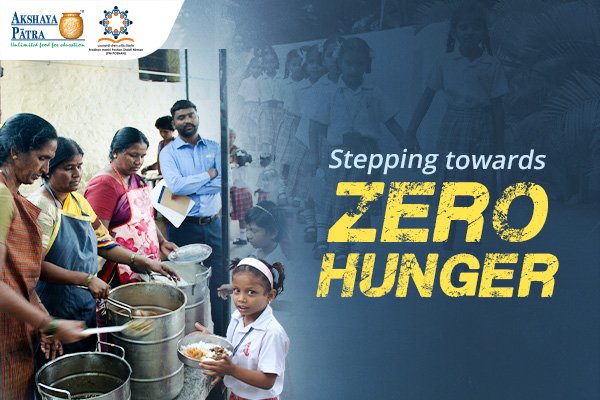Addressing India’s Hunger Crisis. Understanding the cause and identifying solutions
India stands as one of the world's fastest-growing economies, yet its battle with hunger and malnutrition persists. Despite remarkable progress in various sectors, a significant portion of its population continues to struggle with food. Solving India's hunger problem demands a multi-faceted approach that delves into the root cause.
Understanding Malnutrition
Malnutrition has many forms, including undernutrition, micronutrient deficiencies and over-nutrition. Micronutrient deficiencies, particularly iron, vitamin A and iodine, remain prevalent, affecting millions across the country. Paradoxically, over-nutrition is also rising, leading to a surge in obesity and diet-related diseases, further exacerbating the malnutrition crisis.
Causes of Malnutrition
Several factors contribute to India's malnutrition crisis, including poverty, inadequate access to nutritious food, poor sanitation and hygiene, limited healthcare facilities and cultural practices.
• Calorific deficiency – Given their financial situation, people often land up eating what is easily accessible and ignore what is required for a healthy growth.
• Protein deficiency - Pulses are a major panacea to address protein deficiency. For people coming from challenging backgrounds, it is often not feasible to buy ever-rising commodities.
• Micronutrient deficiency (hidden hunger) - India faces a severe crisis in micronutrient deficiency. It is widespread due to poor diet and causes prevalence of disease or non-fulfilment of increased micronutrient needs during pregnancy and lactation.
Food Wastage
Despite being one of the world's largest producers of food, India loses a substantial portion of it at various stages of supply chain (from production to consumption).
As per the UN Environment Programme (UNEP) report, India wastes 69 million tons of food.
Factors such as inadequate infrastructure, poor storage facilities and consumer behaviour contribute to this alarming trend. Cultural norms of extravagant celebrations for festivals and weddings have contributed to excess food wastage as well.
Solutions to get closer to the Zero Hunger Goal
As the economy develops and infrastructure facilities improve, literacy rates go up and access to health care expands, India will move closer towards becoming a zero hunger nation.
Government Initiatives
The Indian Government has implemented several initiatives to combat hunger and malnutrition across the nation. The National Food Security Act (NFSA) of 2013 aims to provide subsidised food grains to approximately two-thirds of the population, ensuring food security for vulnerable households. The Integrated Child Development Services (ICDS) scheme focuses on addressing malnutrition among children through supplementary nutrition, healthcare and early childhood education. Additionally, schemes like the PM POSHAN Abhiyaan (earlier called the Mid-Day Meal (MDM) Programme), Pradhan Mantri Matru Vandana Yojana (PMMVY) and similar missions aim to improve maternal and child health and reduce malnutrition through targeted interventions and awareness campaigns.
Support of Food NGOs
So many NGOs work towards eradicating malnutrition. They implement government’s initiative to ensure that every individual is profited with the schemes that is meant to benefit them. Huge organisations help in the distribution of raw materials, food grains, pulses and other commodities to ensure that it reaches the right audience at the grassroots’ level.
As India’s population grows, the need to improve food assistance also grows. This is why it is essential for us as individuals and corporates to support organisations that have dedicated themselves to helping humanity. For example, by helping non-profit organisations like The Akshaya Patra Foundation, you are helping children with food and education.
Akshaya Patra’s methodologies
Fresh vegetables are procured on a daily basis. After which, they are sorted to retain the best quality. All the vegetables are cleaned with potable water and sanitised before cutting. Cold storage is used to store ready-to-cook cut vegetables to retain freshness. Rice is supplied by the Food Corporation of India (FCI). In order to ensure all the raw materials are fresh, all the kitchens follow the FIFO (First In-First Out) and FEFO (First Expiry-First Out) methods while issuing the raw material for production. By doing so, the kitchens are able to properly identify, store and retrieve the raw materials in an appropriate manner.
It is important to ensure that every Indian has access to sufficient, nutritious food. Support charities that are genuine and have a vast expanse so that every child and every person in need gets access to nutritious food. With your support, significant impact and great progress is possible.
Together, we can succeed!.
Donate online to bring a difference.
Make India a hunger-free nation and get tax exemption for every contribution.


We are hosting a contest open for all steem users you should try it out it's so easy and fun. Give more power to your posts, comment's and up votes..
Steem power delegation Contest for engagement [EP2]